
This site celebrates the life and work of sculptor
John Cassidy (1860 - 1939).
This page relies heavily for information on the the excellent book by Derek Brumhead and Terry Wyke: A Walk Round All Saints (published by Manchester Polytechnic, circa 1990)
Further reading about the School of Art:
Manchester Metropolitan University
Page updated January 2025
All comments welcome: write to us at
charlie@johncassidy.org.uk
Website created and compiled by Charlie Hulme and Lis Nicholson, with the invaluable assistance of the John Cassidy Committee, Slane Historical Society.
The Manchester School of Art
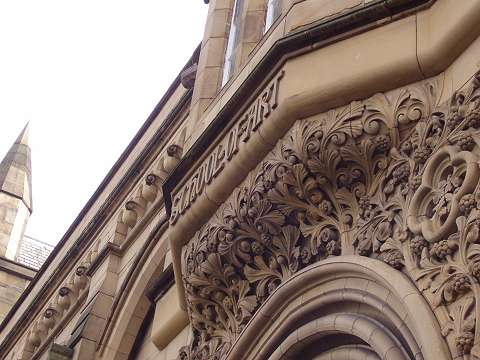
When John Cassidy arrived in Manchester to enrol as a student in the Manchester School of Art, it had not long been installed in its new building on Grosvenor Street which opened in 1881. The building is still in use in 2008 for art teaching by Manchester Metropolitan University (MMU).
The school began life in 1838 as the Manchester School of Design, based in the Manchester Institution building, which is now the Mosley Street building of the City Art Gallery. In the 1870s, the decision was taken to move a new, dedicated, site, and donations were solicited from the wealthy merchants and manufacturers of Manchester. A group of supporters, led by Frederick William Grafton, a calico printer, and including Thomas Henry Nevill, owner of Strines calico printing works. As industrialists, calico printers had a great interest in fostering art, as they needed artistic designs for their colourful textiles. (Incidentally, in 1882, Thomas Nevill purchased the Tudor manor house of Bramhall Hall in Cheshire as a residence for his son, Charles Henry Nevill, who sat with his father on the committee of the School.)
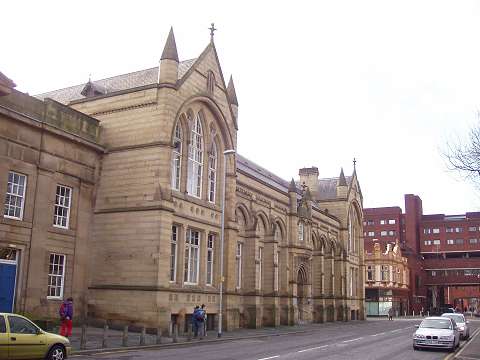
The new building, named the Manchester School of Art, was designed by local architect George Tunstall Tremayne, and built on what had been a timber yard on Grosvenor Street, All Saints, adjacent to Chorlton-on-Medlock Town Hall, a classical-style building which many years later also became part of the University's art teaching facility.
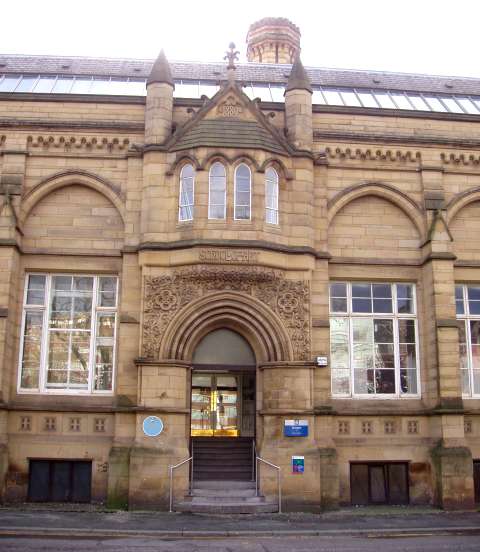
The 1881 School of Art building is built of sandstone in the Gothic Revival style; a red-brick extension to the rear, designed by J. Gibbens Sankey, opened in 1898, was financed by a donation of £10,000 from the Manchester Royal Jubilee Exhibition of 1887, an event in which Cassidy played his small part.
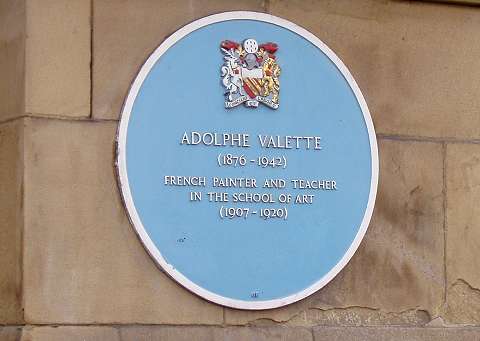
Later, it became the Municipal School of Art, and then part of Manchester Polytechnic in turn MMU, which has christened it, rather prosaically, the 'Grosvenor Building.' Through all this, however, the name 'School of Art' is preserved in stone over the ornate doorway. According to the MMU website, among its teachers over the years were Walter Crane and Adolphe Valette (who gets his blue plaque at the door) whilst famous pupils include L.S. Lowry and Henry Clarence Whaite. Pupils who achieved fame in fields other than art over the years include Sylvia Pankhurst, Julie Walters, Mick Hucknall, and Steve Coogan.
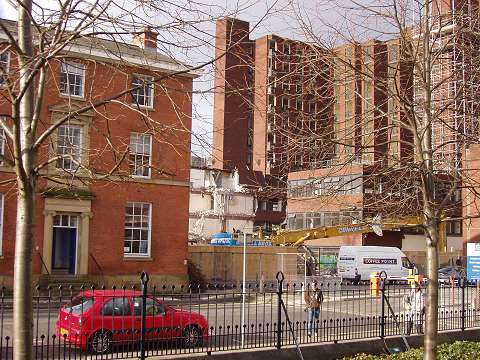
The pictures here were taken in January 2008. The brick and terracotta building seen beyond the school, which now houses the History of Art department of MMU, was built in 1905 as a draper's store for William Righton, and is itself of considerable historic interest, as are a number of other buildings around the green space where All Saint's Church once stood. In the opposite corner of the gardens (above) is an MMU building which incorporates the Georgian facade of a house built in the 1830s which from 1910 until 1974 served as the Manchester Ear Hospital. Behind, buildings dating from the 1970s are already being demolished; in the 21st century all buildings seem to be considered temporary.
The All Saints area is well worth a visit for anyone interested in architecture. It was laid out in Georgian times, using typical street names based on the titles of the aristocracy (Grosvenor, Cavendish, Devonshire) with the intention of developing a high-class residential district. Some houses were built, but the plan was never completed, as the area was too near to the centre of Manchester and its smoking factories, and wealthy people moved further away from the city.